Best second basemen in MLB history

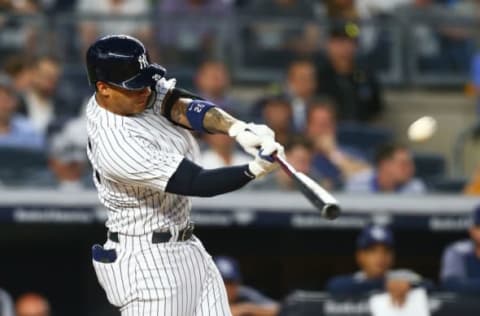
Who are the top 15 second baseman in MLB History?
They say if you are going to win in baseball, you need to be strong up the middle. We’ve already talked about catcher in this space, and others on the site have talked about pitching and shortstop. Now, we are going to talk about second baseman.
There are plenty of excellent second baseman in the game today. Jose Altuve was the AL MVP last season. Gleyber Torres has been huge for the New York Yankees this season.
You may think of second base as more of a defensive position, but there has been some excellent offensive players at the position as well throughout MLB history. Many a Hall of Famer and player with 3,000 hits played the position throughout the years, and when you look throughout the game now, the position is as healthy as it has ever been.
Of course, defense at this position is important as well. You need someone who can make a quick turn on a double play and enough range to go in the hole. Now, you need someone with a strong arm who can play in right field in the shift against left-handed pull hitters.
So who are the top 15 second baseman of all-time? Better question is, how many of them are currently playing in the game today? Well, there’s only one way to find out. Let’s dive into the countdown with a player that many believe should be enshrined in Cooperstown but isn’t quite yet.
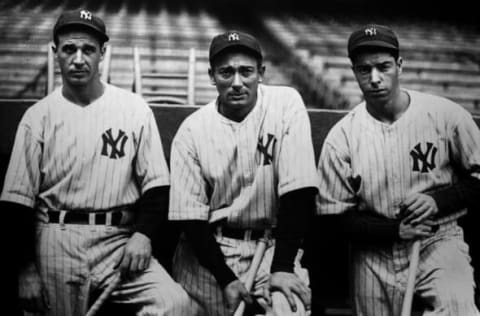
15. Tony Lazzeri
The New York Yankees of the 1920’s had legends like Babe Ruth and Lou Gehrig. Mount Rushmore of baseball type of players. They also had a heck of a second baseman and one of the best in MLB history in Tony Lazzeri, who was a part of five World Series Championship teams and seven pennant winners in his 14 year career.
Lazzeri finished in the top 10 of MVP voting twice. In his 14 year career, he hit over .300 five times, including in 1929 when he hit .354 and didn’t even lead the league. His numbers in 1930 is one of the more interesting stat lines you will see for a player. In that year, he hit .303 with an .835 OPS, nine homers, and a whopping 121 RBI. In fact, during his career, Lazzeri would drive in over 100 runs seven times.
He would finish his career with the Chicago Cubs, Brooklyn Dodgers and New York Giants before retiring in 1939.
Lazzeri is tied for ninth all time among second baseman in RBI with 1194.
Lazzeri would die of a heart attack at age 42 in 1946 and would be elected into the Baseball Hall of Fame in 1991 by the veterans committee.
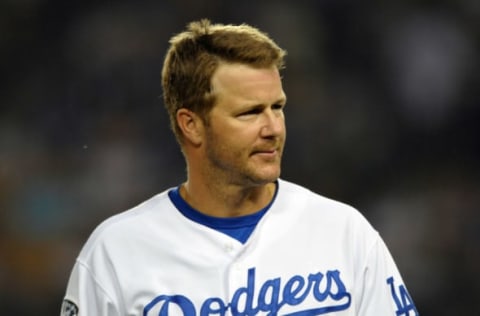
14. Jeff Kent
Sometimes it takes a change of scenery, possibly two in order for a player to really find their stride. For Jeff Kent, he was a solid hitter, but he didn’t take off as the player he became until he became a San Francisco Giant, and he checks in at 14 on our list of the top second baseman in MLB history.
Kent was in deals for big names. In 1992, Kent was the main piece traded from the Toronto Blue Jays for David Cone. After playing two months in Cleveland from being traded from the Mets, the Indians sent him in a trade to the San Francisco Giants for Matt Williams.
Protecting Barry Bonds in that Giants batting order for those teams of the late 1990’s and early 2000’s is where Kent began to thrive.
From 1999-2005, Kent made the All-Star team five times. In 2000, Kent won the NL MVP, hitting .334 with a 1.021 OPS, 33 homers and 125 RBI. Kent had three other top 10 MVP finishes along with four Silver Slugger Awards.
His 377 career homers are the most for any second baseman in the history of baseball. His 1518 RBI are the third most of any second baseman ever. He’s fourth in doubles and OPS.
After a couple of seasons with Houston, Kent would finish off his 17 year career with the Los Angeles Dodgers before retiring after the 2008 season.
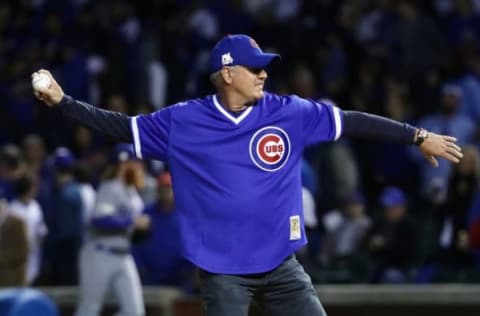
13. Ryne Sandberg
Sometimes a team will look back on a trade and realize they made a huge, huge mistake. Teams in all sports, all throughout history have been on both sides of this. The Chicago Cubs made a bad deal in 1964 trading Lou Brock to the St Louis Cardinals. Two decades later, they made a really good one with the Philadelphia Phillies acquiring Larry Bowa and Ryne Sandberg before the 1982 season for Ivan de jesus.
It took a couple of years, but in 1984-1993, Sandberg was an NL All-Star. Sandberg led the league in runs three times, triples once and homers once with 40. After winning his first of nine straight gold gloves in 1983, 1984 was a season to remember for Sandberg.
He would take home the NL MVP, hitting .314 with an .887 OPS, 19 homers, 84 RBI and a the league leading 19 triples.
Sandberg started to decline and in 1994, before the strike, he would retire. However, like Michael Jordan once did in Chicago, he would come back for the 1996 and 1997 seasons.
All told, Sandberg is fifth in homers among second baseman, and would be elected into the Hall of Fame in 2005.
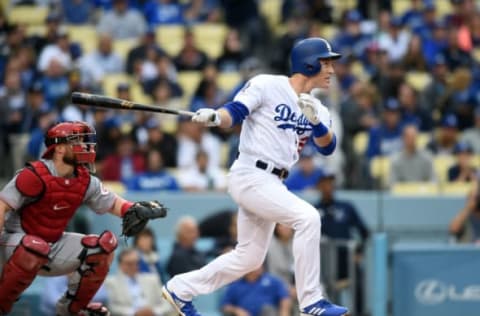
12-Chase Utley
In the mid to late 2000’s the Philadelphia Phillies core of Jimmy Rollins, Ryan Howard, Cole Hamels and Chase Utley brought a World Championship to the City of Brotherly Love in 2008. Only Utley and Hamels are still active, but at his apex, Utley was one of the most feared hitters in the game, which puts him at 12 on our countdown of the top 15 second baseman in MLB History.
Utley was the Phillies first round pick in 2000 and made the big leagues in 2003. In 2005, Utley took off, and from 2006-2010 he was the on the National League All-Star team. During that time, Utley finished in the top 10 in MVP voting three times and won a Silver Slugger four times.
From 2005-2009 he drove in over 90 runs every year, and over 100 four times. He’s also had three 30+ homer seasons and led the league in runs scored in 2006.
Utley’s 259 career homers rank him seventh among second baseman ever and tenth in OPS.
The 39 year old is with the Los Angeles Dodgers currently, where he has been since 2015. He’s serving more in a utility role with the club.
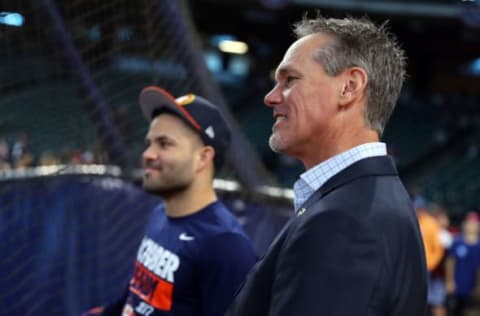
11. Craig Biggio
The Houston Astros had their own version of the Killer B’s in the late 1990’s and 2000’s and big part of that was their first round pick in the 1987 draft in Craig Biggio who checks in at number 11 in our countdown of the top second baseman in MLB History.
Biggio came up as a catcher in 1988, but would move full-time to second starting in 1992. From 1991-1998, Biggio would make the All-Star team every year except for one, though those would be his only appearances in the game.
He would finish in the top 10 in MVP voting twice, and later on in his career, move to center to make room for another second baseman we talked about earlier in this space in Jeff Kent.
He would lead the league in doubles three times, runs twice and hit by pitches five times.
His 3,060 hits are third most all time for a second baseman. His 668 doubles are the most ever, his 291 homers are fourth and his 414 stolen bases are 10th ever for the position.
Biggio would retire at the end of the 2007 season and would be a part of the 2015 Hall of Fame class.

10. Roberto Alomar
It’s very rare for a trade in MLB to actually go well for both teams. Sometimes it just happens that way, and really, it’s the goal of both sides in a trade deal to help each other. The San Diego Padres traded Joe Carter and Roberto Alomar to the Toronto Blue Jays for Tony Fernandez and Fred McGriff. Carter and Alomar helped propel the Jays to two World Series titles, including the ALCS MVP in 1992 and Alomar finds himself at number 10 in MLB history among second baseman.
The Padres called up Alomar in 1988 where he finished fifth in NL Rookie of the Year voting. He would make his first All-Star team in 1990, before getting sent in that trade to the Blue Jays. In fact, Alomar would be an All-Star every year after that through 2001.
Alomar would drive in 90 or more runs four times, hit twenty or more homers three times, and hit over .300 nine out of 10 years from 1992-2001. He would finish in the top 10 in MVP voting five times and win four Silver Slugger Awards. Alomar could also field a little bit, winning 10 Gold Gloves.
Alomar would retire in March of 2005 and would go into the Hall of Fame in 2011.
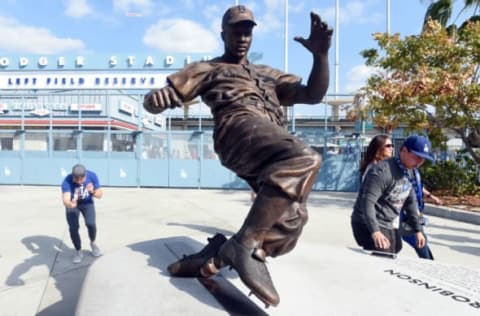
There may not be another athlete ever who does more for the country than what Jackie Robinson did by breaking baseball’s color barrier and checks in at number nine on the countdown of the top second baseman in MLB history.
Robinson made an immediate impact in 1947, hitting .297 with an .810 OPS and led the league in steals in 29. Oh yeah, he won the Rookie of the Year Award too.
Two years later, Robinson would win the NL MVP, leading the league with a .342 average and 37 stolen bases. He would make the All-Star team every year from 1949-1954. He would finish in the Top 10 in MVP voting three other times.
Among second baseman, Robinson ranks sixth all-time in OBP.
Robinson would only play 10 years because he broke into the majors at age 27. He would retire before the 1957 season. The Dodgers would have traded him to the rival New York Giants.
He would be inducted into the Hall of Fame in 1962 and his legacy lives on as every April 15, every major league player wears 42 to honor him, celebrating the day of his major league debut. His number is retired at every major league park and will be never worn by anyone again.
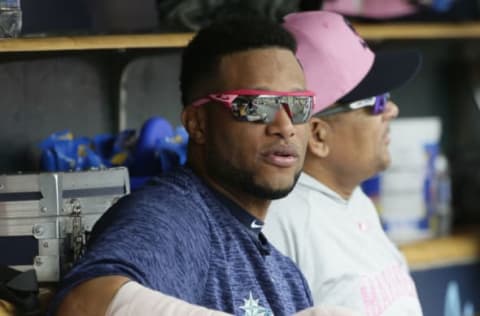
The man who was named after number nine on our countdown checks in at number eight among the greatest second baseman in MLB history.
Cano came up to the New York Yankees to help a team that was struggling in 2005. Cano wasn’t a highly ranked prospect within the organization. He hit .297 with a .778 OPS and finished second in the rookie of the year voting.
He would make the All-Star team the next season and hit a whopping .342. He wouldn’t make the All-Star team again until 2010 but through the 2017 season, would only miss the Midsummer Classic once.
In his career, Cano has two 30 plus homer seasons and four seasons of 100 or more RBI. He’s finished in the top 10 in AL MVP voting six times.
After the 2013 season, Cano would take his talents to the Pacific Northwest by signing a ten year deal worth $240 million.
Cano’s 305 homers are second most ever for a second baseman. His 1,206 RBI are the eighth most ever at the position.
Cano will have to wait to add to those numbers. He’s on the DL with a broken right hand, and is suspended for 80 games for PED usage.
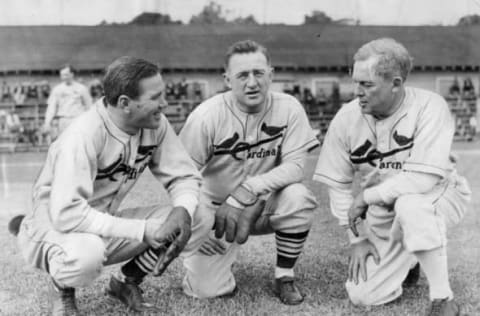
The Fordham Flash checks in at number seven on our countdown of the greatest second baseman in MLB history.
Frisch broke in with the New York Giants in 1919 as a 21 year old, but began to establish himself as one of the best in the game a couple of years later, where he hit .341 with and .870 OPS, 211 hits,100 RBI and a league leading 49 stolen bases.
He’d have an even better season two years later, leading the league in hits with 223 and hitting .348 with an .880 OPS.
Frisch would have three top 10 MVP finishes for the Giants and then would be traded in a blockbuster deal to the St. Louis Cardinals for Rogers Hornsby.
He’d finally get an MVP with the Cardinals in 1931, where he hit .311 and led the league with 28 stolen bases.
Besides making the first three All-Star teams, he appeared in seven World Series, where he was a .294 hitter.
His 2,880 hits are the sixth most for a second baseman. Among those with 1000 or more career games, his .315 average is sixth highest and his 418 stolen bases are the ninth most.
Frisch would retire at the end of the 1937 season and would be a part of the 1947 Hall of Fame class.
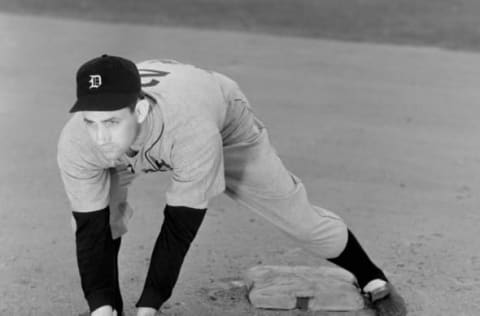
Derek Jeter isn’t the only famous middle infielder to come out of Michigan and wear number two. Charlie Gehringer was pretty good too, so much so, that he finds himself at number six on our countdown of the top second baseman in MLB History.
Gehringer became the Detroit Tigers main second baseman at the age of 23 in 1926. Three years later, Gehringer put up an all time great season leading the league in games, hits, runs, doubles, triples and stolen bases and didn’t even get top 10 MVP consideration.
He was a durable player, leading the league in games played four times throughout his career. He led the league in runs, hits and doubles twice, amassing 60 doubles in 1936.
One year later, Gehringer would win his lone MVP, leading the league in average with .371, a .978 OPS, 14 homers and 96 RBI. He would finish in the top 10 in MVP voting six other times and would make the first six AL All-Star teams.
His 574 doubles are the third most ever for a second baseman and his 1427 RBI are fourth.
Gehringer would retire after the 1942 season and would be inducted into the Hall of Fame in 1949.
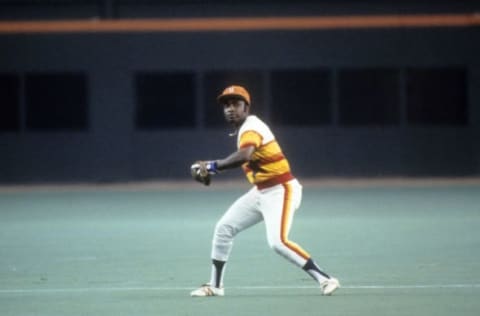
5. Joe Morgan
The Cincinnati Reds’ “Big Red Machine” teams picked up an important cog in that machine with a big trade with the Houston Astros in the winter of 1971. In that eight player deal, the Reds would pick up a pretty good second baseman in Joe Morgan. I don’t think they expected what would follow and that would Morgan would find himself at five on our list of greatest second baseman in MLB history.
Morgan came up as a 19 year old in 1963, but would be a full-time player two years later, finishing second in the Rookie of the Year balloting. He would make two All-Star teams with the Astros as well.
Morgan took off as a Red in 1972, finishing fourth in MVP voting and leading the league in runs, walks and OBP.
After two more top 10 MVP finishes, Morgan would win back to back MVP’s in 1975 and 1976, both of those years were championship years for the Reds.
He was getting on base before getting on base was cool, leading the league in OBP four out of five years from 1972-1976.
Morgan would make the All-Star game every year he was a Red. His 1865 walks are the most ever for a second baseman. He’s ninth in OBP among second baseman with 1,000 or more games played.
He would retire after the 1994 season and be elected into the Hall of Fame in 1990, though most fans now remember him teaming up with Jon Miller for ESPN on Sunday Night Baseball, ABC and NBC.
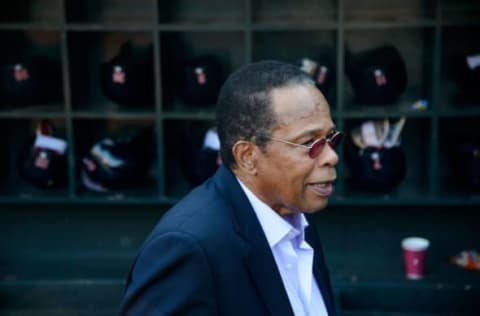
4. Rod Carew
Carew played over 1,000 games at first and second base, but for this list, we are certainly counting him as a second baseman and the fourth best ever in MLB history.
Carew came up to the Twins in 1967 at age 21, and all he did is hit, and hit and hit some more. Carew would win the AL Rookie of the Year Award, hitting .292 with a .750 OPS. Two years later, Carew would win his first of seven batting titles, hitting .332 and finishing 10th in the MVP voting. Carew’s average would not dip below .300 in a season until 1984.
Carew would have six more top 10 finishes in the AL MVP voting, including winning the award in 1977. The year, he would hit .388, with a .449 OBP and a 1.019 OPS, all league leading. Oh yeah, he also led the league with 239 hits, 138 runs and 16 triples.
In his 19 year career, Carew would make the All-Star team for the first 18 of them.
Carew’s 3,053 hits are the fourth most for a second baseman. His .328 average is fourth ever.
Carew would retire after the 1985 season and be inducted into the Hall of Fame in 1991.
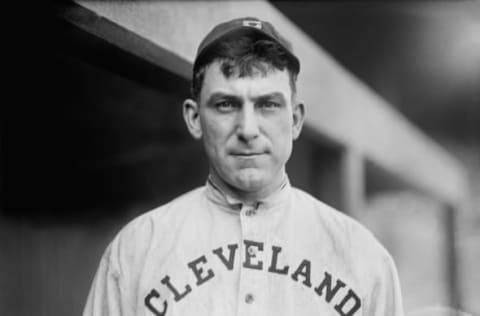
3. Nap Lajoie
When you look back into major league history, the 1800’s and early 1900’s gets overlooked, but there were some excellent players back then. One of them Nap Lajoie, who played for the Philadelphia Phillies, Philadelphia Athletics and Cleveland Bronchos and he checks in at number three among the greatest second baseman in MLB history.
Lajoie would lead the league in RBI three times, doubles five times, hits four times, and average five times.
In 1901, he would achieve the triple crown, hitting .426 with 14 homers and 125 RBI. He also led the league that year in runs, hits, doubles, on base, slugging, OPS and total bases. If there was an MVP Award back then, he would have won it and walking away.
Lajoie was one of the best hitters of his time, hitting over .300 every year except for one from 1896-1913. He was also player/manager in Cleveland from 1905-1909.
His 657 doubles are second most ever for a second baseman. He also had the most RBI for a second baseman with 1599. His 3,243 hits are the second most.
Lajoie would retire at the age of 41 in 1916 and be inducted into the Hall of Fame in 1937.
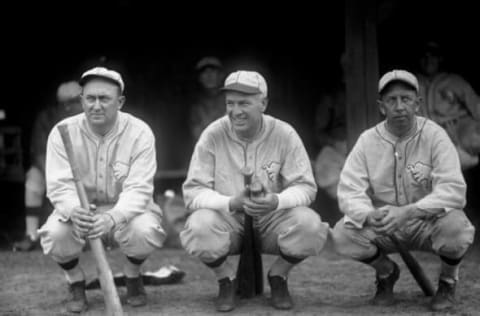
Lajoie wasn’t the only great second baseman in the 1900’s. Eddie Collins checks in at number two on the list of the top second baseman in MLB history.
Collins broke in for the Philadelphia Athletics in 1906 as a 19 year old, and two years later, established himself at the position.
In 1910, Collins would steal a league leading 81 bases. He would lead the league two more times in that category during his career.
From 1911-1914, Collins would finish in the top five in MVP voting every year, including winning the award in 1914, where he hit .344 with 85 RBI and a .905 OPS.He would lead the league in runs in three of those four years.
The Chicago White Sox would purchase Collins from the A’s in 1915. Collins would get three more top five MVP finishes with the White Sox from 1922-1924.
In his Hall of Fame career, Collins has the most hits of any second baseman ever with 3,315. His 741 stolen bases is also the most of any second baseman ever. Only Craig Biggio scored more runs as a second baseman.
Collins would retire in 1930, and would make the Hall of Fame in 1939.
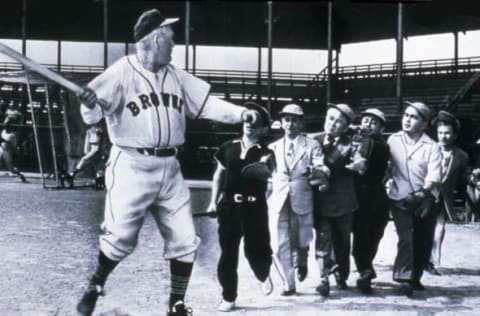
1. Rogers Hornsby
Now, we’ve reached number one on our list of the top second baseman of all time and that honor belongs to the man who said the below
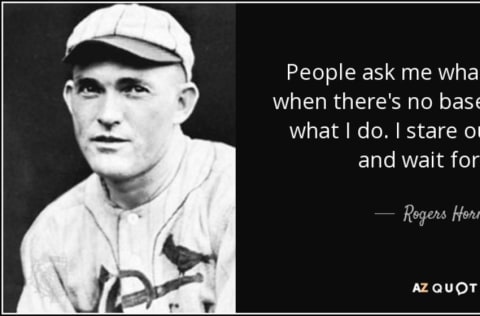
Rogers Hornsby is the greatest second baseman of all time.
More from Call to the Pen
- Philadelphia Phillies, ready for a stretch run, bomb St. Louis Cardinals
- Philadelphia Phillies: The 4 players on the franchise’s Mount Rushmore
- Boston Red Sox fans should be upset over Mookie Betts’ comment
- Analyzing the Boston Red Sox trade for Dave Henderson and Spike Owen
- 2023 MLB postseason likely to have a strange look without Yankees, Red Sox, Cardinals
Hornsby led the league in batting average seven times from 1920-1928. Three of those times, he hit over .400.
Hornsby was a two time MVP and finished in the top three two other times.
He led the league in multiple categories, multiple times. Runs? Five times.Hits? Doubles? Homers? Four. Slugging? 10 times.
His 301 homers are the third most ever for a second baseman. He is fifth in doubles, second in RBI. His .357 average is the best ever for a second baseman with more than 1,000 games. His .434 OBP and .577 slugging is also the best ever.
Not only was Hornsby an excellent second baseman, but for 12 of his seasons, Hornsby was player/manager, including a World Champion with the Cardinals in 1926. Hornsby would retire in 1937 and be inducted into the Hall of Fame in 1942.
Next: Top 10 Catchers in MLB History
So there you have it. The top 15 second baseman of all time. Anyone too high? Too low? Leave a comment below.